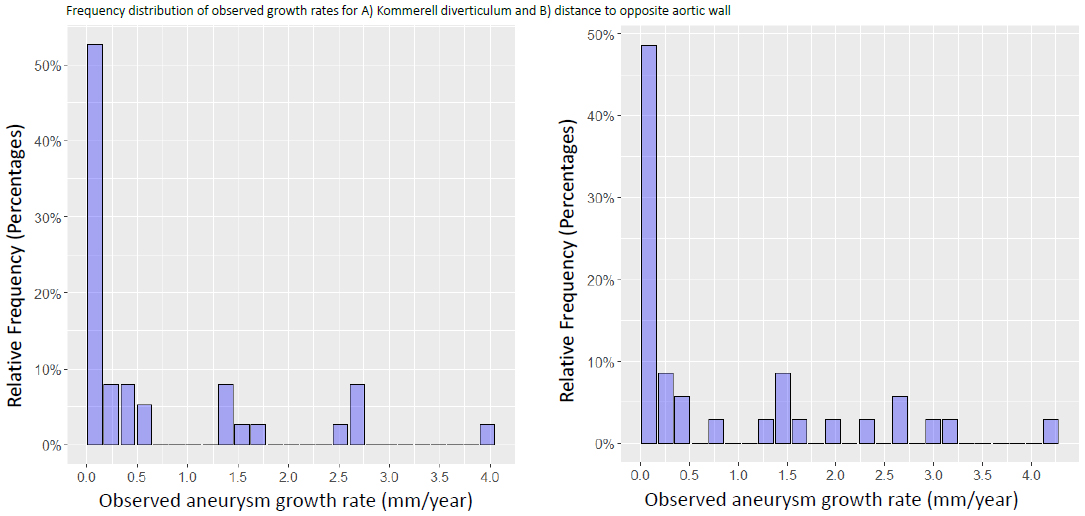Natural History and Management of Kommerell’s Diverticulum in a Single Tertiary Referral Center
Young Erben, MD1, Adam Brownstein, BS1, Camilo A. Velasquez, MD1, Yupeng Li, PhD2, John A. Rizzo, PhD2, Hamid Mojibian, MD1, Bulat Ziganshin, MD1, John A. Elefteriades, MD1.
1Yale University, New Haven, CT, USA, 2Department of Economics and Department of Family, Population and Preventive Medicine, Stony Brook, NY, USA.
Objective: The Kommerell diverticulum (KD) is an extremely rare developmental abnormality of the aorta related to an aberrant subclavian artery (ASCA). The objective of our study was to review the natural history of KD and ASCA using our single-center experience diagnosing and managing KD and ASCA. Methods: A retrospective review of the Yale radiological database from January 1999 to December 2016 was performed. Only patients with KD/ASCA and a computed tomography (CT) scan of the chest were selected for review. The primary end-point was to review the natural history of KD and ASCA and the secondary end-points were to review the management and outcomes of those patients treated for KD and ASCA. Results: 62 patients with KD/ASCA were identified, with a mean age of 61±17 years; 40 were females (65%). On CT, left and right sided aortas were present in 41 (66%) and 21 (34%) patients, respectively. A right ASCA and left ASCA were present in 41 (66%) and 21 (34%) patients, respectively. Four patients were symptomatic on presentation. Symptoms included dysphagia in two patients, chest and back pain and emboli to the fingers in one patient each. The mean KD diameter was 20.4±6.1mm and the distance to the opposite aortic wall (DAW) was 45.6±9.6mm. 57 patients were followed with a mean follow-up time was 34.0±35.1 months. 1 patient ruptured without definitive repair. Five patients underwent operative intervention including 4 open and 1 endovascular repair. Complications from operative intervention included ischemic stroke with hemorrhagic transformation, deep vein thrombosis and pneumonia. On multivariable regression analysis, hypertension was a predictor of growth of DAW. The mean growth rate for KD and DAW was 1.4±0.38mm/year and 2.4±0.50mm/year, respectively. Conclusions: Our single-center study is able to demonstrate that indeed KD and ASCA are extremely rare. We have been able to determine a small growth rate of the KD to be 1.4±0.38mm/year and DAW to be 2.4±0.50mm/year. Therefore, observation of KD and ASCA is feasible using the current size criteria for repair (KD of 30mm and a DAW of 50mm). Operative repair is infrequent with significant morbidity. 
Back to 2018 Program




